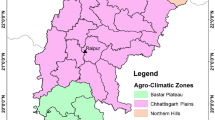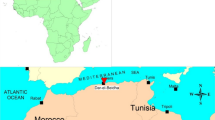Abstract
The establishment of an accurate computational model for predicting reference evapotranspiration (ET0) process is highly essential for several agricultural and hydrological applications, especially for the rural water resource systems, water use allocations, utilization and demand assessments, and the management of irrigation systems. In this research, six artificial intelligence (AI) models were investigated for modeling ET0 using a small number of climatic data generated from the minimum and maximum temperatures of the air and extraterrestrial radiation. The investigated models were multilayer perceptron (MLP), generalized regression neural networks (GRNN), radial basis neural networks (RBNN), integrated adaptive neuro-fuzzy inference systems with grid partitioning and subtractive clustering (ANFIS-GP and ANFIS-SC), and gene expression programming (GEP). The implemented monthly time scale data set was collected at the Antalya and Isparta stations which are located in the Mediterranean Region of Turkey. The Hargreaves–Samani (HS) equation and its calibrated version (CHS) were used to perform a verification analysis of the established AI models. The accuracy of validation was focused on multiple quantitative metrics, including root mean squared error (RMSE), mean absolute error (MAE), correlation coefficient (R2), coefficient of residual mass (CRM), and Nash–Sutcliffe efficiency coefficient (NS). The results of the conducted models were highly practical and reliable for the investigated case studies. At the Antalya station, the performance of the GEP and GRNN models was better than the other investigated models, while the performance of the RBNN and ANFIS-SC models was best compared to the other models at the Isparta station. Except for the MLP model, all the other investigated models presented a better performance accuracy compared to the HS and CHS empirical models when applied in a cross-station scenario. A cross-station scenario examination implies the prediction of the ET0 of any station using the input data of the nearby station. The performance of the CHS models in the modeling the ET0 was better in all the cases when compared to that of the original HS.








Similar content being viewed by others
References
Abonyi J, Andersen H, Nagy L, Szeifert F (1999) Inverse fuzzy-process-model based direct adaptive control. Math Comput Simul 51(1-2):119–132. https://doi.org/10.1016/S0378-4754(99)00142-1
Abyaneh HZ, Nia AM, Varkeshi MB, Marofi S, Kisi O (2011) Performance evaluation of ANN and ANFIS models for estimating garlic crop evapotranspiration. J Irrig Drain Eng 137(5):280–286. https://doi.org/10.1061/(ASCE)IR.1943-4774.0000298
Allen RG, Pereira LS, Raes D, Smith M (1998). Crop evapotranspiration-Guidelines for computing crop water requirements-FAO Irrigation and drainage paper 56. FAO, Rome, 300(9), D05109.
Aytek A (2009) Co-active neurofuzzy inference system for evapotranspiration modeling. Soft Comput 13(7):691–700. https://doi.org/10.1007/s00500-008-0342-8
Baba APA, Shiri J, Kisi O, Fard AF, Kim S, Amini R (2013) Estimating daily reference evapotranspiration using available and estimated climatic data by adaptive neuro-fuzzy inference system (ANFIS) and artificial neural network (ANN). Hydrol Res 44(1):131–146. https://doi.org/10.2166/nh.2012.074
Bishop CM (1995) Neural networks for pattern recognition. J Am Stat Assoc 92(440):1642. https://doi.org/10.2307/2965437
Canakci M, Topakci M, Akinci I, Ozmerzi A (2005) Energy use pattern of some field crops and vegetable production: case study for Antalya region, Turkey. Energy Convers Manag 46(4):655–666. https://doi.org/10.1016/j.enconman.2004.04.008
Chauhan S, Shrivastava RK (2009) Performance evaluation of reference evapotranspiration estimation using climate based methods and artificial neural networks. Water Resour Manag 23(5):825–837. https://doi.org/10.1007/s11269-008-9301-5
Chiu SL (1997) Extracting fuzzy rules from data for function approximation and pattern classification. Fuzzy Inf Eng – A Guid tour Appl 10
Cobaner M (2011) Evapotranspiration estimation by two different neuro-fuzzy inference systems. J Hydrol 398(3-4):292–302. https://doi.org/10.1016/j.jhydrol.2010.12.030
Fahimi F, Yaseen ZM, El-shafie A (2016) Application of soft computing based hybrid models in hydrological variables modeling: a comprehensive review. Theor Appl Climatol 128(3-4):1–29. https://doi.org/10.1007/s00704-016-1735-8
Ferreira C (2001) Gene expression programming: a new adaptive algorithm for solving problems. Complex Syst 13:1–22
Gocic M, Trajkovic S (2010). Software for estimating reference evapotranspiration using limited weather data. Computers and Electronics in Agriculture, 71(2), 158–162.
Goci M, Motamedi S, Shamshirband S, Petković D, Ch S, Hashim R, Arif M (2015) Soft computing approaches for forecasting reference evapotranspiration. Comput Electron Agric 113:164–173. https://doi.org/10.1016/j.compag.2015.02.010
Hardy Y, Steeb W-H (2002) Gene expression programming and one-dimensional chaotic maps. Int J Mod Phys C 13(01):25–30. https://doi.org/10.1142/S0129183102002912
Hargreaves GH, Samani ZA (1985) Reference crop evapotranspiration from temperature. Appl Eng Agric 1(2):96–99. https://doi.org/10.13031/2013.26773
Haykin, S., 1999. Neural networks: a comprehensive foundation
Huo Z, Feng S, Kang S, Dai X (2012) Artificial neural network models for reference evapotranspiration in an arid area of northwest China. J Arid Environ 82:81–90. https://doi.org/10.1016/j.jaridenv.2012.01.016
Jensen ME, Burman RD, Allen RG (1990) Evapotranspiration and irrigation water requirements. ASCE
Karimaldini F, Shui LT, Mohamed TA, Abdollahi M, Khalili N (2012) Daily evapotranspiration modeling from limited weather data by using neuro-fuzzy computing technique. J Irrig Drain Eng 138(1):21–34. https://doi.org/10.1061/(Asce)Ir.1943-4774.0000343
Kisi O (2008) The potential of different ANN techniques in evapotranspiration modelling. Hydrol Process 22(14):2449–2460. https://doi.org/10.1002/hyp.6837
Kisi O (2007) Evapotranspiration modelling from climatic data using a neural computing technique. Hydrol Process 21(14):1925–1934. https://doi.org/10.1002/hyp.6403
Kisi O, Cengiz TM (2013) Fuzzy genetic approach for estimating reference evapotranspiration of Turkey: Mediterranean Region. Water Resour Manag 27(10):3541–3553. https://doi.org/10.1007/s11269-013-0363-7
Kisi O, Sanikhani H, Zounemat-Kermani M, Niazi F (2015a) Long-term monthly evapotranspiration modeling by several data-driven methods without climatic data. Comput Electron Agric 115:66–77. https://doi.org/10.1016/j.compag.2015.04.015
Kisi O, Sanikhani H, Zounemat-Kermani M, Niazi F (2015b) Long-term monthly evapotranspiration modeling by several data-driven methods without climatic data. Comput Electron Agric 115:66–77. https://doi.org/10.1016/j.compag.2015.04.015
Kumar M, Raghuwanshi N, Singh R, Wallender W, Pruitt W (2002) Estimating evapotranspiration using artificial neural network. J Irrig Drain Eng 128(4):224–233. https://doi.org/10.1061/(ASCE)0733-9437(2002)128:4(224
Kumar M, Raghuwanshi NS, Singh R (2011) Artificial neural networks approach in evapotranspiration modeling: a review. Irrig Sci 29(1):11–25. https://doi.org/10.1007/s00271-010-0230-8
Kurtulus B, Razack M (2010) Modeling daily discharge responses of a large karstic aquifer using soft computing methods: artificial neural network and neuro-fuzzy. J Hydrol 381(1-2):101–111. https://doi.org/10.1016/j.jhydrol.2009.11.029
Ladlani I, Houichi L, Djemili L, Heddam S, Belouz K (2014) Estimation of daily reference evapotranspiration (ET0) in the north of Algeria using adaptive neuro-fuzzy inference system (ANFIS) and multiple linear regression (MLR) models: a comparative study. Arab J Sci Eng 39(8):5959–5969. https://doi.org/10.1007/s13369-014-1151-2
Landeras G, Ortiz-Barredo A, López JJ (2009) Forecasting weekly evapotranspiration with ARIMA and artificial neural network models. J Irrig Drain Eng 135(3):323–334. https://doi.org/10.1061/(ASCE)IR.1943-4774.0000008
Lowe D, Broomhead D (1988) Multivariable functional interpolation and adaptive networks. Complex Syst 2:321–355
Mehdizadeh S, Behmanesh J, Khalili K (2017) Using MARS, SVM, GEP and empirical equations for estimation of monthly mean reference evapotranspiration. Comput Electron Agric 139:103–114. https://doi.org/10.1016/j.compag.2017.05.002
Nash JE, Sutcliffe JV (1970), River flow forecasting through conceptual models part I -A discussion of principles, Journal of Hydrology, 10 (3), 282–290.
Pandorfi H, Bezerra AC, Atarassi RT, Vieira FMC, Filho JADB, Guiselini C (2016) Artificial neural networks employment in the prediction of evapotranspiration of greenhouse-grown sweet pepper. Rev Bras Eng Agrícola Ambient 20:507–512. https://doi.org/10.1590/1807-1929/agriambi.v20n6p507-512
Parasuraman K, Elshorbagy A, Carey SK (2007) Modelling the dynamics of the evapotranspiration process using genetic programming. Hydrol Sci J 52(3):563–578. https://doi.org/10.1623/hysj.52.3.563
Penman HL (1948) Natural evaporation from open water, bare soil and grass. Proc R Soc London Ser A Math Phys Sci 193(1032):120–145. https://doi.org/10.1098/rspa.1948.0037
Petković D, Gocic M, Trajkovic S, Shamshirband S, Motamedi S, Hashim R, Bonakdari H (2015a) Determination of the most influential weather parameters on reference evapotranspiration by adaptive neuro-fuzzy methodology. Comput Electron Agric 114:277–284. https://doi.org/10.1016/j.compag.2015.04.012
Petković D, Gocic M, Trajkovic S, Shamshirband S, Motamedi S, Hashim R, Bonakdari H (2015b) Determination of the most influential weather parameters on reference evapotranspiration by adaptive neuro-fuzzy methodology. Comput Electron Agric 114:277–284. https://doi.org/10.1016/j.compag.2015.04.012
Rahimikhoob A (2010) Estimation of evapotranspiration based on only air temperature data using artificial neural networks for a subtropical climate in Iran. Theor Appl Climatol 101(1-2):83–91. https://doi.org/10.1007/s00704-009-0204-z
Rana G, Katerji N (2000a) Measurement and estimation of actual evapotranspiration in the field under Mediterranean climate: a review. Eur J Agron 13(2-3):125–153. https://doi.org/10.1016/S1161-0301(00)00070-8
Rana G, Katerji N (2000b) Measurement and estimation of actual evapotranspiration in the field under Mediterranean climate: a review. Eur J Agron 13(2-3):125–153. https://doi.org/10.1016/S1161-0301(00)00070-8
Russell SO, Campbell PF (1996). Reservoir operating rules with fuzzy programming. Journal of water resources planning and management, 122(3), 165-170.
Ryan N, Hibler DL (2011) Robust gene expression programming. Procedia Comput Sci 6:165–170. https://doi.org/10.1016/j.procs.2011.08.032
Sanikhani H, Kisi O, Kiafar H, Ghavidel SZZ (2015) Comparison of different data-driven approaches for modeling lake level fluctuations: the case of Manyas and Tuz Lakes (Turkey). Water Resour Manag 29(5):1557–1574. https://doi.org/10.1007/s11269-014-0894-6
Savic DA, Walters GA, Davidson J W (1999). A genetic programming approach to rainfall-runoff modelling. Water Resources Management, 13(3), 219–231.
Shiri J, Kisi O, Landeras G, Lopez JJ, Nazemi AH, Stuyt LCPM (2012a) Daily reference evapotranspiration modelling by using genetic programming approach in the Basque Country (Northern Spain). J Hydrol 414–415:302–316. https://doi.org/10.1016/j.jhydrol.2011.11.004
Shiri J, Kişi Ö, Landeras G, López JJ, Nazemi AH, Stuyt LCPM (2012b) Daily reference evapotranspiration modeling by using genetic programming approach in the Basque Country (Northern Spain). J Hydrol 414–415:302–316. https://doi.org/10.1016/j.jhydrol.2011.11.004
Shiri J, Sadraddini AA, Nazemi AH, Kisi O, Landeras G, Fakheri Fard A, Marti P (2014) Generalizability of gene expression programming-based approaches for estimating daily reference evapotranspiration in coastal stations of Iran. J Hydrol 508:1–11. https://doi.org/10.1016/j.jhydrol.2013.10.034
Specht DF (1991) A general regression neural network. Neural Netw, IEEE Trans 2(6):568–576. https://doi.org/10.1109/72.97934
Tabari H, Kisi O, Ezani A, Hosseinzadeh Talaee P (2012) SVM, ANFIS, regression and climate based models for reference evapotranspiration modeling using limited climatic data in a semi-arid highland environment. J Hydrol 444–445:78–89. https://doi.org/10.1016/j.jhydrol.2012.04.007
Tabari H, Martinez C, Ezani A, Hosseinzadeh Talaee P (2013) Applicability of support vector machines and adaptive neurofuzzy inference system for modeling potato crop evapotranspiration. Irrig Sci 31(4):575–588. https://doi.org/10.1007/s00271-012-0332-6
Trajkovic S (2005) Temperature-based approaches for estimating reference evapotranspiration. J Irrig Drain Eng 131(4):316–323. https://doi.org/10.1061/(ASCE)0733-9437(2005)131:4(316
Traore S, Guven A (2013) New algebraic formulations of evapotranspiration extracted from gene-expression programming in the tropical seasonally dry regions of West Africa. Irrig Sci 31(1):1–10. https://doi.org/10.1007/s00271-011-0288-y
Traore S, Luo Y, Fipps G (2016) Deployment of artificial neural network for short-term forecasting of evapotranspiration using public weather forecast restricted messages. Agric Water Manag 163:363–379. https://doi.org/10.1016/j.agwat.2015.10.009
Wang YM, Traore S, Kerh T, Leu JM (2011) Modelling reference evapotranspiration using feed forward backpropagation algorithm in arid regions of Africa. Irrig Drain 60(3):404–417. https://doi.org/10.1002/ird.589
Yaseen ZM, El-shafie A, Jaafar O, Afan HA, Sayl KN (2015) Artificial intelligence based models for stream-flow forecasting: 2000–2015. J Hydrol 530:829–844. https://doi.org/10.1016/j.jhydrol.2015.10.038
Yassin MA, Alazba AA, Mattar MA (2016) Artificial neural networks versus gene expression programming for estimating reference evapotranspiration in arid climate. Agric Water Manag 163:110–124. https://doi.org/10.1016/j.agwat.2015.09.009
Zanetti SS, Sousa EF, Oliveira VP, Almeida FT, Bernardo S (2007) Estimating evapotranspiration using artificial neural network and minimum climatological data. J Irrig Drain Eng 133(2):83–89. https://doi.org/10.1061/(ASCE)0733-9437(2007)133:2(83
Zhao L, Xia J, Xu C y, Wang Z, Sobkowiak L, Long C (2013) Evapotranspiration estimation methods in hydrological models. J Geogr Sci 23(2):359–369. https://doi.org/10.1007/s11442-013-1015-9
Author information
Authors and Affiliations
Corresponding author
Rights and permissions
About this article
Cite this article
Sanikhani, H., Kisi, O., Maroufpoor, E. et al. Temperature-based modeling of reference evapotranspiration using several artificial intelligence models: application of different modeling scenarios. Theor Appl Climatol 135, 449–462 (2019). https://doi.org/10.1007/s00704-018-2390-z
Received:
Accepted:
Published:
Issue Date:
DOI: https://doi.org/10.1007/s00704-018-2390-z




